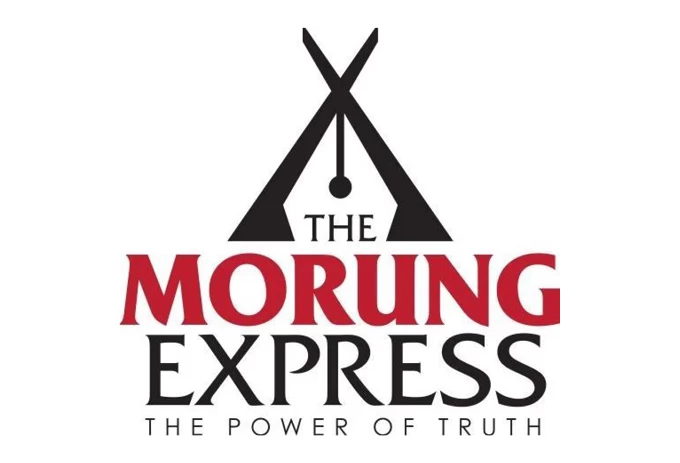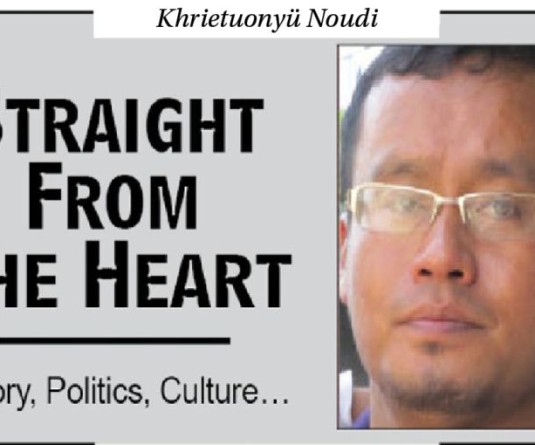
Dipak Kurmi
The Naga peace process, an endeavor stretching across decades, has reached a precarious juncture as the National Socialist Council of Nagalim (Isak-Muivah) [NSCN(I-M)] has sought “third-party intervention” to break the deadlock over the Framework Agreement signed with the Government of India (GoI) in 2015. The agreement, once hailed as a “historic” milestone, now stands overshadowed by mutual accusations and unfulfilled promises. NSCN(I-M), led by its Chief Political Negotiator Thuingaleng Muivah, has accused the Indian government of reneging on its commitments and refusing to recognize the “Nagalim sovereign national flag” and “Nagalim sovereign national constitution.” This refusal has become the primary source of discord, prompting the NSCN(I-M) to threaten a return to armed resistance if the government imposes a political solution without these demands.
The idea of Nagalim encompasses all Naga-inhabited areas across Nagaland, Manipur, Assam, and Arunachal Pradesh. For NSCN(I-M), the flag and constitution are non-negotiable components of sovereignty. This rigid stance has stalled progress, exacerbating the uncertainty surrounding the peace process.
Historical Context and Evolution of the Naga Peace Talks
The Naga political struggle traces its roots back to the mid-20th century, with the peace talks formally beginning on August 1, 1997. The Framework Agreement, signed on August 3, 2015, was perceived as a beacon of hope. Muivah and then-Interlocutor R.N. Ravi signed the agreement in the presence of Prime Minister Narendra Modi and other senior government officials, heralding it as a major breakthrough. Both parties emphasized mutual respect, equality, and shared sovereignty in the spirit of the agreement, sparking optimism for a long-awaited resolution.
However, the lack of transparency regarding the agreement’s content created uncertainty among the Naga population. The vague articulation of the Naga “unique history and position” left many unanswered questions regarding its implications for Nagaland and Naga-inhabited areas in neighboring states. This ambiguity sowed seeds of mistrust, which later grew into significant obstacles in the peace process.
Muivah has consistently claimed that the agreements signed by the NSCN(I-M)—including the Amsterdam Joint Communique of 2002 and the Framework Agreement of 2015—recognized Nagalim’s sovereignty. According to him, these agreements acknowledged the Indo-Naga conflict as one between two sovereign entities, paving the way for a “shared sovereign power” arrangement. The GoI, however, has not made any official statements supporting this interpretation.
Parallel Negotiations and Competing Visions
The GoI’s strategy to initiate parallel negotiations with the Naga National Political Group (NNPG)—a conglomerate of seven other Naga factions—further complicated the peace process. In 2017, the NNPG and the GoI signed an “Agreed Position,” which emphasized deriving sovereign powers from the Indian Constitution. The NNPG proposed that unresolved issues could be addressed through political representation in new legislative and constitutional bodies following the final settlement.
While the NNPG demonstrated a willingness to work within the framework of the Indian Constitution, the NSCN(I-M) remained firm on its demand for a separate flag and constitution. The GoI, however, has made it clear that a single accord with all Naga factions is the only way forward. The lack of consensus between the NSCN(I-M) and the NNPG on these core issues has stalled progress on the final agreement.
Stalemate and the Challenges of Shared Sovereignty
The divergence in interpretations of the Framework Agreement came to a head in 2019 when negotiations halted over the contentious issues of a separate flag and constitution. Attempts to revive the talks in 2022, under new Interlocutor A.K. Mishra, have yielded little progress. NSCN(I-M) leaders, including Chairman Q. Tuccu and Muivah, have accused the GoI of manipulating the Framework Agreement for its convenience and delaying its implementation.
The NSCN(I-M) views the flag and constitution as integral components of sovereignty. On the other hand, the GoI has remained steadfast in its refusal to accommodate these demands, creating an impasse. Tuccu has argued that the agreement was intended to rectify historical injustices and that the GoI’s failure to uphold it betrays the spirit of the accord.
Mineral Resources and Article 371A
The issue of sovereignty extends beyond political and cultural realms to include economic dimensions. NSCN(I-M) has claimed ownership of major mineral resources, including petroleum, in Nagalim. This claim conflicts with the GoI’s efforts to explore oil in disputed areas along the Assam-Nagaland border. While Assam and Nagaland have agreed in principle to joint exploration, the NSCN(I-M) and other Naga organizations oppose such initiatives until the political issue is resolved.
Article 371A of the Indian Constitution, which provides special protections to Nagaland, has become another contentious point. Sub-clause (a) of Article 371A(1) grants the Nagaland Assembly significant autonomy in matters of religion, customary law, and resource ownership. However, the NSCN(I-M) argues that Article 371A is insufficient and obstructive, demanding a more comprehensive framework that aligns with the Framework Agreement.
Prospects for Resolution
The prolonged stalemate has led to frustration among stakeholders, including the Nagaland government, which convened a consultative meeting in September 2023 to urge unity among Naga factions. The meeting also called for elevating the peace talks to a senior Union Cabinet Minister’s level and appointing a new interlocutor to expedite the process.
The Parliamentary Standing Committee on Home Affairs has noted the complexities of the Naga issue. In its 2018 report, the committee highlighted NSCN(I-M)’s insistence on sovereignty and its reluctance to integrate fully within India. While the Framework Agreement marked a departure from the NSCN(I-M)’s earlier stance, the organization’s hardened position on the flag and constitution suggests deep-rooted mistrust and competing visions of sovereignty.
The Naga peace process stands at a critical juncture, with the stakes higher than ever. The veil of secrecy surrounding the Framework Agreement, coupled with divergent interpretations, has created a trust deficit that hinders progress. The GoI’s insistence on a single accord, combined with the NSCN(I-M)’s unyielding demands, has made reconciliation elusive.
As the impasse persists, the six-decade-long conflict risks further escalation. A resolution requires addressing the core issues of sovereignty, identity, and resource ownership with sensitivity and transparency. Only through genuine dialogue, mutual respect, and creative problem-solving can the fragile peace process be steered toward a sustainable and inclusive settlement.
A passionate columnist, insightful writer, and dedicated policy analyst, Dipak Kurmi serves as the Sub-Editor for a prominent daily newspaper based in Assam.
His work, deeply rooted in analysis and editorial expertise, shapes conversations and brings critical issues to the forefront.
Dipak Kurmi is always connected to the pulse of regional and national discourse.
Reach him at: dipakkurmiglpltd@gmail.com




